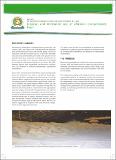| dc.contributor.author | EAC | |
| dc.date.accessioned | 2021-06-16T09:52:38Z | |
| dc.date.available | 2021-06-16T09:52:38Z | |
| dc.date.issued | 2018-04 | |
| dc.identifier.uri | http://hdl.handle.net/11671/24117 | |
| dc.description | Pages 3, Colored pictures, tables and graphs. Includes bibliographic references. | en |
| dc.description.abstract | Agricultural commodities, including maize, groundnuts, and cassava, milk, and cotton seed contaminated with aflatoxin pose serious threat to human and animal health, and to the economies of the EAC Partner States. It is, therefore, desirable that contamination should be prevented to the greatest extent possible. Given that eradication of aflatoxin contamination in foods is not feasible at the moment, alternative uses should be considered with disposal being the last resort. The EAC, however, doesn’t have established and functional mechanisms for disposal of aflatoxin-contaminated agricultural commodities. | en |
| dc.description.sponsorship | This policy brief was produced by the East African Community based on Technical Papers Developed under the EAC Aflatoxin Prevention and Control Project funded by USAID East Africa Regional Economic Integration Office with technical backstopping from the International Institute of Tropical Agriculture (IITA). | en |
| dc.language.iso | en | en |
| dc.publisher | EAC | en |
| dc.relation.ispartofseries | EAC Policy Brief of Aflatoxin Prevention and Control;No. 8, 2018 | |
| dc.subject | Aflatoxin | en |
| dc.title | Disposal and alternative use of Aflatoxin contaminated food. | en |
| dc.type | Policy | en |

